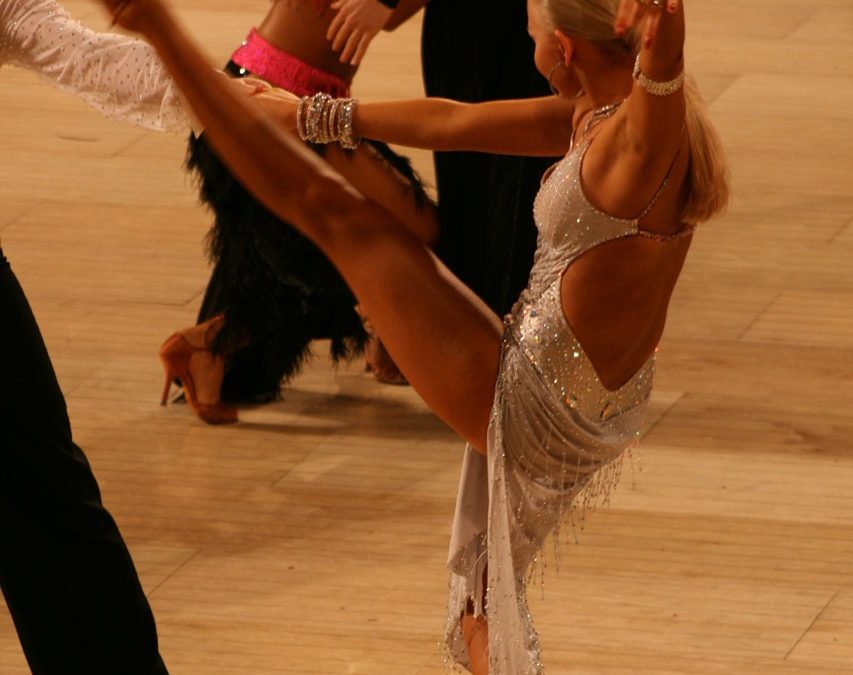
by PT-clc | Nov 14, 2017 | Change, Coping with Change, Creative Living
In a previous post I outlined a proven process for embracing change while at the same time making a positive impact in the world – https://pamela-thompson.com/strengthen-impact-world-dance-change/. In this article we will take a deep dive into the second step in this 5-step process: Choose Your Dance.
Many of us often feel like we are corks bobbing on the sea of life, particularly when challenges keep coming up in our personal and/or professional lives, and it seems like we keep repeating the same patterns again, and again and again and getting the same results. Believe it or not, we all have choice. When you realize this and become aware of patterns that are no longer serving you, you can examine those parts of yourself and make changes, whether it be in the type of partner you choose, or in the career or business direction you pursue.
In step two of the Art of Change Framework, you identify the transition or change you want to work on and where you are on your transition journey.
What do I mean by a transition journey?
Based on over 30 years of working with people and organizations, William Bridges identified a 3 – phase process that helps you understand, get unstuck and move forward regardless of the transition you are going through whether it be in your career, relationship, health … . The 3 phases are:
- An Ending
- The Neutral Zone
- A New Beginning[1]
In each phase there are opportunities to learn and grow. There are emotions associated with each phase that need to be acknowledged and released, and there is key work that needs to be done to get unstuck so that you can move forward.
An Ending is the end of a job/relationship/ career. The main work of this phase is to “let go” of the old job/relationship/career and to celebrate the positive aspects and lessons learned from it. Think about a transition you are current experiencing or one in the past that you still hold strong emotions around. What words and feelings come up for you? It could be anger, guilt, relief …
“Letting go” is easier said than done. In an upcoming post I will share some proven strategies for “letting go”.
In Phase 2, the Neutral Zone, you may feel stuck, angry, confused and uncertain of what to do next. This is the phase when we often second guess ourselves and question our actions. You may tell yourself things like “maybe that relationship wasn’t so bad”, “maybe I shouldn’t have left my job and started a business” … . You may even return to the old job or relationship. The main work of this phase is “getting clear”. It is important during this phase to reconnect with yourself and clarify who you are and what is really important to you. It provides an opportunity to envision the job, career or relationship of your dreams. In an upcoming post I will share some strategies on how to envision the relationship, career, life of your dreams.
In Phase 3, the New Beginning, you take action on the vision you created during the “Neutral Zone”. This can be a time of real transformation if you’ve taken the time to learn and grow in the “Neutral Zone”. Think about how you felt when you launched your new business, were selected for that dream job, met the man or woman of your dreams. These are the feelings associated with the New Beginning such as excitement, happiness, confidence, clarity and fulfillment.
I invite you to take a moment to reflect and ask yourself Am I on a transition journey? If so, what phase of the journey are you on? When you do this you may notice that you are in more than one transition. For example, if you recently separated, changed your job, moved to a new city and downsized, these are four transitions you are currently experiencing. It is important to choose one to focus on at a time and go through the transition journey process noticing the insights and feelings that come up for you. You may also be holding onto emotions associated with a past transition; for example anger at an old partner. If you haven’t processed a previous transition, you may be carrying negative emotions and perceptions around it that are important to release. Otherwise you you may bring those emotions and perceptions into future relationships.
Stay tuned for my next post where I’ll share the third step in the Art of Change Framework designed to help you embrace change and create the life of your dreams – one of clarity, confidence, radiant health, happiness, fulfillment and inner peace.
I’d love to hear from you. Please share your comments below. Did you find the transition journey process helpful? Did you glean any new insights from the process? I invite you to take my complimentary Transition Journey Quiz and receive tips on how to successfully navigate any life transition – https://pamela-thompson.com/about/
[1] Bridges, William, TRANSITIONS Making Sense of Life’s Changes, 2004.

by PT-clc | Oct 17, 2017 | Coping with Change, Stress Management, Women in Business
In these challenging and uncertain times you may be feeling fearful, sad, angry and uncertain about your future, the future of your family and of the planet. You may be feeling there is little or nothing you can do to make the world a better place. I believe there is much each of us can do to be a force for good in the world, and it’s easier than you think. Learning about change, how you respond to it and how to navigate it, are important skills and tools to have in these challenging and tumultuous times.
Based on more than 25 years of consulting and coaching with people and organizations on 5 continents including living and working in conflict zones and managing uncertainty, I’ve developed the Art of Change framework. This framework is a proven model for embracing change whether it involves getting unstuck and moving forward when change is imposed on us, or whether we choose to initiate a change in our beliefs, attitudes and/or behaviors.
The Art of Change is based on the belief that embracing change is a creative process that opens us up to new possibilities. Think of the times in your life when change was thrust upon you; e.g. you were laid off; or when a boyfriend/girlfriend broke up with you. At that time, you may have felt caught off guard, angry, fearful and uncertain about the future. On reflection, these changes opened you up to a new and better relationship or a position more aligned with your values and talents.
Embracing change enables you to let go of patterns that are no longer serving you and to move forward with confidence, clarity, improved health, happiness, fulfillment, and inner peace.
The Art of Change framework is a 5-step process for embracing change that uses the metaphor of life as a dance. The steps are:
- Shine the Light –Explore how you respond to change and why
- Choose Your Dance –Identify the transition you want to work on and where you are on your transition journey
- Feel the Rhythm and Learn the Steps –Commit to embracing change in your body rather than resisting it, and begin doing the work associated with the phase of the transition journey you are in
- Practice, Practice, Practice! –Do the work that includes letting go, identifying lessons learned, envisioning the work or relationship of your dreams, taking action, and viewing change as a creative process that opens you up to new possibilities
- Consciously Share Your Dance with the World –Observe the positive changes in yourself, how others respond to you, and the positive impact you have on your family, friends, communities and workplaces.
Stay tuned for my next post where I will share more about the Art of Change framework and how you can embrace any change with less stress and greater understanding, and at the same time be a positive force for good in the world.
I welcome your thoughts and comments below and appreciate you sharing the article with others.

by PT-clc | Oct 3, 2017 | Change, Coping with Change, Creative Living, Health & Wellbeing
We are hard-wired to perceive change as a threat. Our primitive brain likes to keep us safe and has enabled humans to survive through time. When our amygdala (part of the brain) detects fear, it sends messages to our bodies to go into fight, flight or freeze mode. This explains why some of us become angry as a result of a change being imposed on us, fearful and wanting to run away from a situation rather than face it, or paralyzed and unable to think clearly or to move forward.
So, how can we reduce our fear of change given this biological reality? Norman Doidge in The Brain that Changes Itself provides powerful evidence that our thoughts and perceptions have the power to change the structure of our brains. In other words, if we create new beliefs around change and internalize them, we also create new neural pathways that enable us to respond positively to change rather than view it as a threat. Candace Pert in her landmark book Molecules of Emotion provides strong evidence that our thoughts and emotions affect our bodies.
Given these facts, how can we reduce our fear of change? Here are some proven strategies. We can:
- Understand how we respond to change and why – A simple exercise is to rate yourself on a scale from 1 to 10 related to how you respond to change: “1” being it scares me to death and “10” being I thrive on it. Another way is to spend some time reflecting on the barriers you have towards change and writing them down. A number of barriers to change have been identified in the literature including: becoming paralyzed by fear, procrastinating, blaming others, believing we can’t do something or are not worthy, always focusing on problems rather than solutions, getting stuck in old habits or denying change is happening, and not being willing to put in the effort required to make a change. Ask yourself, What barriers do I have to embracing change in general, and in this particular situation? E.g. changing jobs, leaving an unsatisfying relationship, accepting a new leader in my organization. Notice past patterns in your life.
- Become aware of our beliefs around change – Close your eyes and think about a recent change; one that you didn’t choose but was imposed on you. Examples include: lay-off, separation, relocation. Notice what words come up for you. Write them down. Begin with the stem “Change is”_______ and fill in the blank. Do a brain dump and write down all the words that come up to define what change means to you. Examples are “Change is scary”; “Change is to be avoided at all costs” …
- Try on some new beliefs about change; such as “Change opens me up to new possibilities”, “Embracing change is a creative process”, “Change provides me with an opportunity to learn and grow”. Post one of these positive beliefs where you will see it at least 3 times a day – on your computer, bathroom mirror…and say this belief aloud each time you see it. Do this for 21 to 30 days and observe what you notice.
- Become aware of how we perceive change and replace our negative feelings and emotions with positive and empowering ones. Ariane de Bonvoisin in “The First 30 Days – Your Guide to Making Any Change Easier” identifies six “change demons” and their antidotes. The six change demons are: fear, doubt, blame, guilt, shame and impatience. She explains that the change demons “help us navigate through change by alerting us if we are off course and encouraging us to choose a different emotion to help us get where we want to go.” Being aware of which emotion you are feeling and replacing each one with positive and empowering emotions and antidotes are key to learning from and navigating change and dealing with uncertainty. The six change demons and their antidotes are:
| Change Demon |
Antidote |
| 1) fear |
faith |
| 2) doubt |
surrender (to not knowing) |
| 3) blame |
honesty (taking responsibility for our role in situations) |
| 4) guilt |
forgiveness |
| 5) shame |
honor (your dark or shadow side) |
| 6) impatience |
endurance |
- Introduce small changes into your daily routine. Take a different route to work. Eat something different for breakfast. Walk or cycle to work instead of driving. Do this for a month and observe what you notice. Change is like a muscle. The more change you choose in your life, the more flexible you tend to become.
What change demons are your facing? How do you typically respond to change? What strategies will you begin integrating into your life to reduce your fear of change?
I welcome your comments below. Feel free to share this post with others.

by pam | Jun 1, 2017 | Benefits of being in nature, Conscious Living, Creative Living, Leadership, LeadinginUncertainTimes
I believe that humanity is essentially good and that we are all interconnected.
I believe that everything happens for a reason.
The Universe provides me with what I need and Great Spirit is guiding me towards fulfillment.
Nature connects me with my soul.
I believe that life is an adventure to be lived to the fullest and
that I am here to help build peace in the world.
(Learning to Dance with Life: A Guide for High Achieving Women, p. 6 –
http://creativelivingcommunity.com/blog/the-book/
What do you believe?
In a previous post (http://creativelivingcommunity.com/leading-in-uncertain-times-the-power-of-perception/), I shared the power of perception and how it affects our ability to lead effectively in uncertain times. In this post, I will share some lessons learned based on my own beliefs and experiences gleaned from leading and managing in a variety of organizations and cultures on 5 continents.
Lessons Learned:
- We are all the same. We all want to be valued, respected, to feel safe, secure and to belong.
When living and working in Afghanistan six years ago, I was sitting in the rose garden of the Ministry of Public Health eating lunch with one of my female Afghan colleagues when there was a powerful explosion. Within seconds of the huge blast, my Muslim colleague was phoning each of her family members to ensure that they were all safe. I think most of us would have done the same. We all value family and care about those close to us. The explosion was from a number of suicide bombers entering the military hospital across the road. The result was the senseless deaths of a number of Afghan patients and their families, and medical students.
I have enjoyed managing and consulting in a number of culturally diverse and uncertain environments, and believe my effectiveness has been largely due to the belief that we are all the same. When you view everyone through the lens of that belief, you are able to connect with them, and work effectively whether or not you speak their language or have the same cultural background or religion. In Afghanistan using participatory processes, I was able to collaboratively develop/co-create the first strategic plan with the Ministry of Public Health, and have it pass through all the policy layers and be signed off by the Minister within 9 months.
I invite you to experiment tomorrow and try throughout your day to view everyone you see through the lens and belief that “we are all the same”, whether it be a homeless person, a colleague you have a tense relationship with, or a family member you have difficulties relating to. Try this and notice what you notice.
- We are all interconnected.
You may have heard that when a butterfly flaps its wings in the Amazon, two years later it can result in a tornado in Kansas. The butterfly effect[1] has demonstrated that a small change in one area can result in powerful future outcomes in another. If you as a leader believe in an organizational culture that focuses on people, understanding and collaboration, you have the power to shape and change the organization based on how you treat and respond to people and challenging situations daily. How you communicate with others has an impact throughout the organization and beyond. We all have heard about the disheartened employee who has gone home and kicked his dog or beaten his wife.
I invite you to “try out” this belief and have it in the forefront of your mind when you interact and communicate with others on a daily basis in your workplace, community, and family. Notice how this affects your interactions, the organizational morale and environment.
- Nature connects me with my soul.
Did you know that when you walk in forests, it reduces your blood pressure, reduces your heart rate and increases the number of natural killer cells your body produces (i.e. strengthens your immune system)? Based on longitudinal research, the Japanese have institutionalized forest bathing or forest therapy. In their highly competitive culture, they encourage and support people to regularly visit centers in forests throughout Japan to forest bathe, and they continue to collect powerful longitudinal data on its valuable effects.
I encourage you to spend time in nature for 30 minutes or more at least 3 times a week. When I spend time in nature I feel relaxed, energized, happy and free. My stress is reduced (if I’m having a particularly stressful day). If as leaders we are committed to spending regular time in nature, do you think it would positively impact our effectiveness?
- Life is an adventure to be lived to the fullest.
Based on this belief, I’ve lead an adventurous and full life so far [and hope to continue doing so J ]. I’ve lived and worked in the mountains of northern Colombia with peasant farmers in the late 80s when Pablo Escobar was “running around” and the Medellin Cartel was in full swing. I’ve lived and worked in Kabul, Afghanistan for 13 months from October 2010 to November 2011 (a volatile and uncertain time), and managed large multi-stakeholder projects in Pakistan and Nigeria where corruption is rampant and violence can erupt at any time. When I don’t have adventure in my life I get restless and feel unfulfilled, and I either seek out adventure or it serendipitously comes my way. Similarly, if contribution and making a positive difference in the world is one of your core values[2] and you work in an organization that is “all about the money”, over time you will likely feel unhappy and unfulfilled. This will affect your personal and your work life.
I encourage you to identify your core beliefs and what is most important to you, and then begin living them everyday.
I welcome your comments and experiences below. What lessons have you learned from leading in uncertain times? Which lessons above do you resonate with? Appreciate you sharing the post with others.
[1] https://en.wikipedia.org/wiki/Butterfly_effect
[2] For more about core values and why they are important: http://creativelivingcommunity.com/do-you-live-in-alignment-with-your-core-values/

by pam | Mar 28, 2017 | Benefits of being in nature, Body-centered coaching, High Achieving Women, Self-Care, Stress Management
Oh, how I love spring! Here on the west coast, the daffodils and crocus have been out for several weeks, and the cherry blossoms and rhododendrons are starting to show their beauty. Many of us in spring get “spring fever” or a burst of energy; particularly if we’ve endured a long, cold winter. This time of year, I have to remind myself that I’m not 25 anymore and avoid taking on too many new obligations and activities even though I feel so alive! Perhaps you relate. Do you often take on alot of activities and obligations, and say “yes” because you’ve been asked and you think you should? I’ve been there and know what it feels like to lose your energy and not feel like doing much of anything. So how can you prevent yourself from taking on too much and then crashing?
Here are a few tips:
- Spend time in nature several times a week or more. Go for a walk, a hike, visit a garden, use all of your senses to take in the natural beauty. Bathe in forests. The Japanese have done longitudinal research to show that when we walk in forests, it reduces our heartrate, reduces our blood pressure and increases the number of natural killer cells our body produces (strengthens our immune system).
- Be aware of your energy and the people who “give” and “take” energy from you. Get clear on the people in your life who energize you and those who tend to sap your energy. Spend most of your time with those who energize you.
- Set healthy boundaries. Write a list of the things you enjoy doing. When people ask you to chair a committee or serve on the Executive of a group, be clear that this is what you enjoy doing rather than what you feel you SHOULD do. Living life following the “shoulds” is energy-draining and doesn’t bring out our “best sides”. For more strategies visit http://creativelivingcommunity.com/are-you-giving-too-much-2/
- Practice saying “no”. You may have been raised in a family where children and women were expected to do what they were asked and experienced the repercussions of NOT following the rules. … Start small. It’s like a muscle; the more you say “no”, the easier it becomes.
- Listen to and Trust in Your Body’s Wisdom. Our bodies always know the truth. There are a number of decision-making tools that enable us to get “out of our heads” and our logical left-brains, and tap into our bodies. Muscle testing is one way to determine whether we should say “yes” or “no”. One way to do this is to stand up straight, feel like you have a plumb line going from the top of your head to the tips of your toes. Then ask yourself the following: Is my name …? And state your real name. Your body should sway forward meaning “yes”. Then say to yourself Is my name John Doe? If that is not your name, your body should sway backwards. Now you have a baseline. Now ask yourself other questions such as Should I accept the position as President of this Club/organization?. When your body moves backwards it indicates “no”, forwards “yes”, and if it doesn’t move ask again. It may be that this decision won’t have strong impact on you either way. For additional examples see http://creativelivingcommunity.com/how-do-you-make-decisions/ .
I’d love to hear from you and invite you to try any or all of the strategies above and notice how they work for you.
Please share below strategies that you’ve found helpful in preventing you from taking on too much and then crashing.
Here’s to your health, happiness, fulfillment and inner peace!




